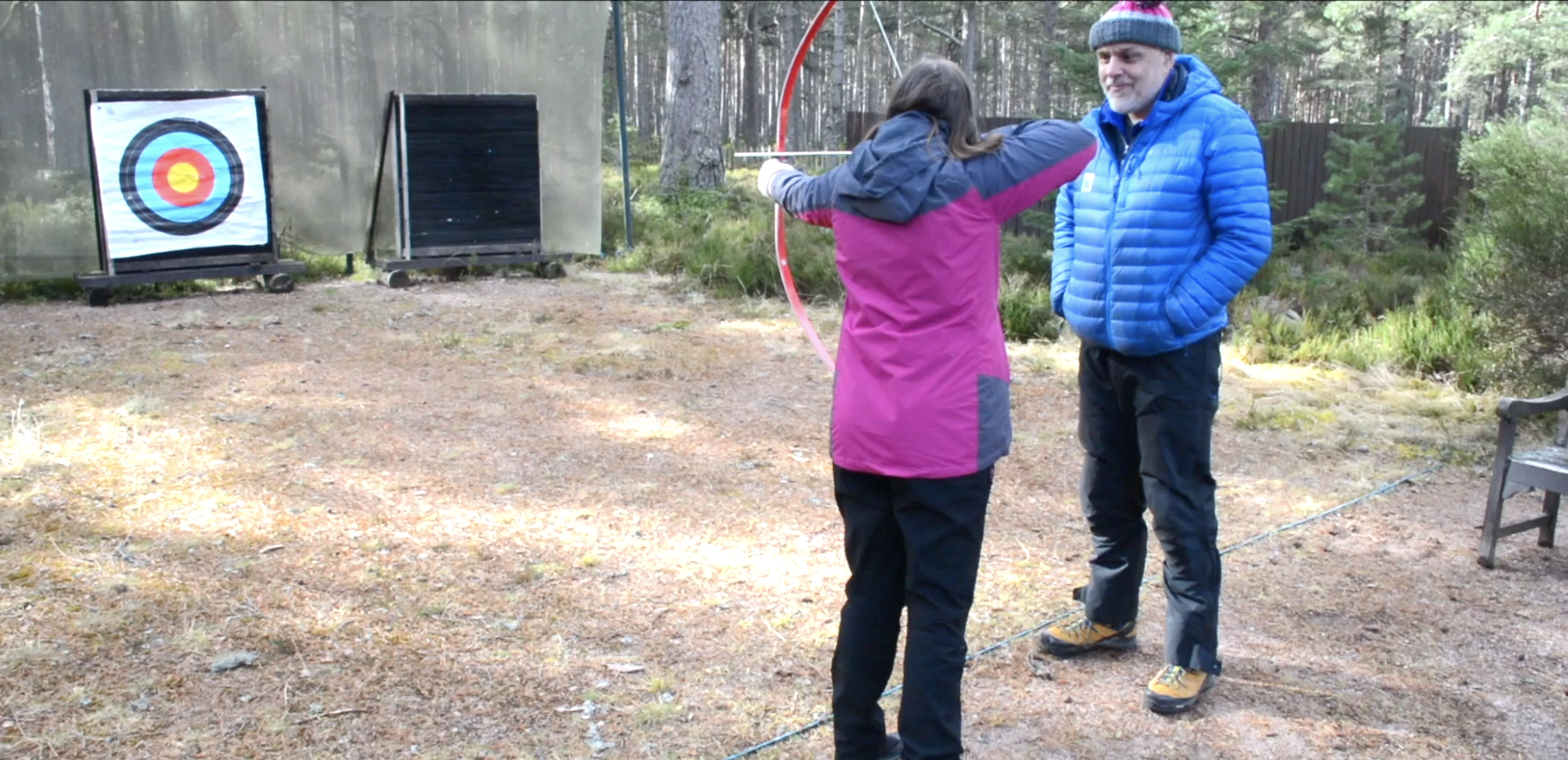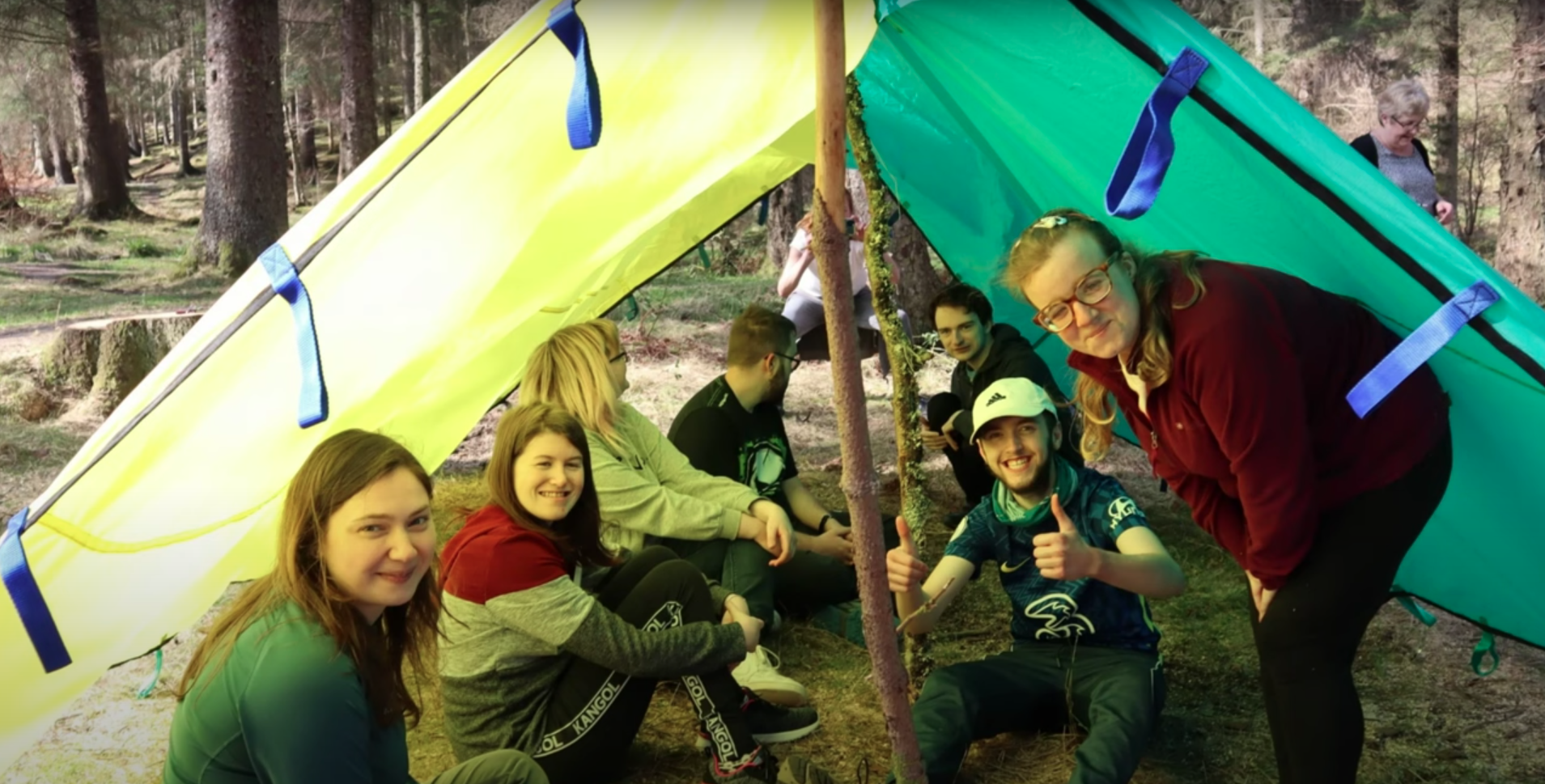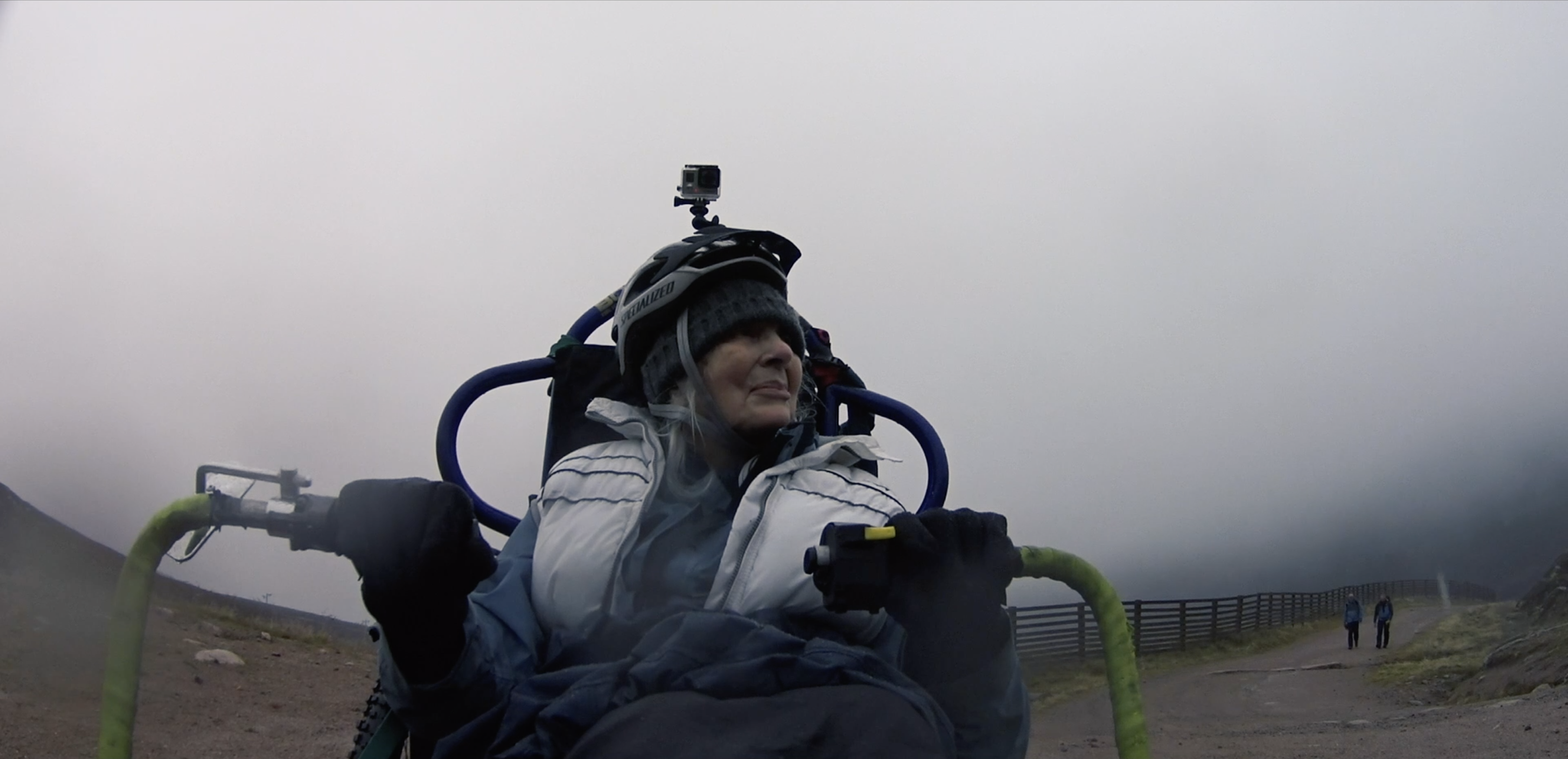A blustery day on the shores of Loch Morlich, applying judgement to the challenging conditions, a more sheltered environment was found to explore the skills and techniques of paddle boarding. The session demonstrated that perceptions and fears can be reduced with consideration and communication which encourage the initial acceptance to have a go and ultimately develop positive and enjoyable experiences.
People
Amy arrived with a few close family members and Sophie Tear, Spina Bifida and Hydrocephalus Scotland’s Family Support Worker. At the start of the session she had a certain amount of natural apprehension and nervousness with the prospect of undertaking something new, however, she was able to generate a positive mindset that enabled her to move up the performance pathway and release some of her potential. Her positive mindset broke her free from being an activity prisoner (restricted and withheld from participating), to perform beyond the bounds of a passenger (being taken on an activity) to truly beginning to participate and perform at her own level.
Amy benefitted from the support network she may have unwittingly started to develop, having the support of the people around her and having participated in a number of outings and activities with Sophie, a level of trust had developed which supported her taking a ‘leap of faith’ and be open to the guidance of the paddle board instructional team. Her approach and communication demonstrated to the instructional team that she was a person who was in control of her own decision making, able to understand and implement instructions and have the capacity to provide informed consent to participation.
Planning
The activity was hosted and staffed by the Loch Morlich Watersports Centre set on the shore of the stunning Loch Morlich. In attendance was Liam Watson of Wats Sup Adventures who is currently a senior outdoor instructor for Scouts Scotland. The day aimed at providing the opportunity for providers to showcase their inclusive practices and undertake a one-on-one session exploring the functional and practical issues of using a paddleboard by someone with spina bifida. Paddleboards are incredibly stable and low to the water, not having the gunwale of a canoe or the cockpit of a kayak, they have significant benefits for reaching the water with a paddle, especially if the upper body is broad and arm reach is limited.
The session was split into key areas, with a clear focus for each, aiming to create an opportunity to engage in positive functional questioning and to support the focussing of attention. The key areas were simply equipment, coaching process and performance. Gaining a mutual understanding and agreement on the aim of the session provides a solid foundation level of objectivity. Being objective reduces the cloudiness created when looking at tweaking equipment, changing coaching technique or looking at how effective a paddle stroke simultaneously.
Focussing on equipment aimed to look at the essential interfaces of board-paddler-paddle. Focussing on the coaching process aimed to look at stroke development, structured delivery and the pitch and pace of the session to get the essential across. Focussing on performance aimed at looking at how the relationship and effectiveness of board-paddler-paddle, how it can be measured and progressed.
Environment
The stunning location of Loch Morlich has accessible trails and paths leading to the granite sand shores. The loch, as with most inland lochs, is ideal for paddle board sport however it is exposed and prone to wind. Considering the conditions on the day a sheltered inlet was used. Accessible woodland trails led to the inlet and a level, reasonable even area provided a suitable platform to review the equipment and undertake the on-water activity. Access from the bank to the water was a drop of approx. 30cm with the wind, significantly reduced by the surrounding trees, was running down the inlet.
Equipment
A paddle board was provided by McConks paddle boards and an Equal Adventure (EA) Aquabac postural support was strapped to it as the base unit. Considering the principles of posture (Appropriate, base-up, comfortable, dynamic, effective and flexible) Amy was then supported on the board with an EA Armadillo Bolster under her knees and an EA Zebra foot support (which was not used once confidence and performance increased).
Personal clothing included layered inners and waterproofs, slab buoyancy aid and helmet.
It was considered that manual transferring down onto the board was slightly too high and the solution was to use an EA Mango Sling System that was slid under Amy and used during a co-ordinated manual lift onto the board. Once on the board Amy was slid into the water before fins were attached to the underside of the board.
Practice
Clearly defined roles and responsibilities were arranged prior to the event enabling a decision to be made with mutual consent to move the activity area into a sheltered environment to mitigate the exposure to the wind and the interference of coldness and discomfort this would have caused to learning.
An uncomplicated explanation of the outline of the session enabled Amy to ‘buy in’ to what was planned and contribute positively enabling the instructional team gaining an understanding of her functional abilities and through discussion.
Agreeing and adhering to a clear instructional approach and lead instructor provided a single voice for critical information such as instructions, corrective details and safety considerations worked well enabling Amy to focus on one person, other voices that she then heard only contributed to general conversation and encouragement.
Regular visual checks, supported with discreet questioning aimed at maintaining a level of comfort but also to assess if Amy was becoming wet from water being splashed/dripped from the paddle onto where she was sitting. Although becoming wet for most people is uncomfortable, being wet for some people, especially those with little or no sensitivity, creates an environment that can irritate skin and cause skin breakdown and damage. Being mindful of the effects of water and a moist environment on skin is essential along with being mindful of the need to maintain a good circulatory flow around the body especially in the lower limbs.
Key Message from EA
Sometimes it’s important to give things a go to see if you like them or not as often it is not until you are in the experience that you understand how enjoyable it can be.
Possible Micro-Adventure Opportunities
- Visit a lake and consider the wind that is blowing, determine which way it is going and what it feels like on your body and what it does to the things around you.
- Sit on the ground and feel the grass, soil, leaves etc that are covering the ground, consider travelling along a section of the ground near you as if you were an ant, think about what it would be like climbing over the sticks, leaves and stones.
- Find a paddle board centre and go for a taster session
- Paddle board on 10 Lochs in the Cairngorms National Park.
Additional Information
Liam Watson
Liam is currently a senior outdoor instructor for Scouts Scotland and he also does some sup coaching for himself as Wats Sup adventures. He is a provider and aspirant provider of British Canoeing instructor awards including all the awards for paddle boarding. He has a passion for developing paddle sports and inclusion within paddle sports and regularly volunteers his time for the Scottish Canoe association in particular being a member of their Stand up paddleboard and disability equality group. Liam is also supported by McConks sup boards.
My Facebook page is still developing but is “wats sup adventures”
McConks sup’s found here https://mcconks.com/ Facebook as “McConks”





